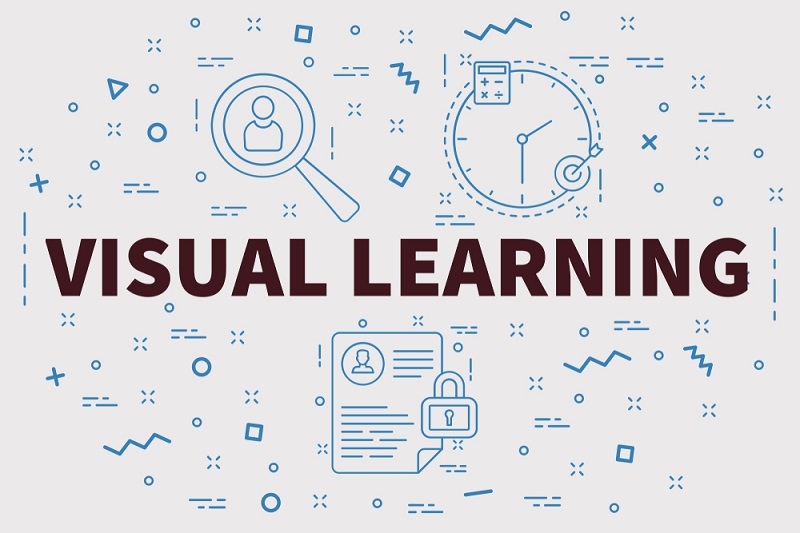
If you research different learning styles, it will help you to understand why people have different approaches of studying. Identifying the learning styles of a learner at an early stage helps them to develop a study habit that feels more natural. This can make the complete process of studying comfortable and minimize the chances of confusion.
In this blog, you will find out everything about the different styles of learning and tips to enhance your efficiency.
The learning styles of learners shape how they respond to information. Some learners understand things when they see them. Some understand them only after hearing them. Others remember ideas through movement or by writing them down. These habits form naturally and often stay with learners throughout their education.
The learning styles of learners can also be noticed in daily study behavior. A learner who draws small shapes or arrows while revising may be visual. Someone who talks through a chapter softly may learn through sound. Another learner who walks around the room may learn through movement. And a student who fills pages with notes likely depends on reading and writing.
When learners understand these patterns, they begin choosing simple study methods that match their comfort. This reduces stress and allows them to stay focused longer. The learning styles of learners also help them absorb information in a clearer way because they work with their natural strengths.

The different types of learning styles explain how learners understand information through four main approaches. Each type comes with its own habits, strengths, and simple methods that help learners stay engaged without forcing themselves into routines that do not suit them.
Learners who follow the visual learning style connect with information when it is presented visually. They rely on diagrams, colour-coded notes, mind maps, and charts. These visuals help them see the structure of the idea, which makes topics easier to understand and remember. They prefer clean layouts over long blocks of text.
Learners who use the auditory learning style remember information better when they hear it. Spoken instructions, soft repetition, and discussions help them process lessons. They often read text aloud or record simple explanations to listen to later. Sound gives them a natural rhythm that supports memory and understanding.
The kinesthetic learning style suits learners who understand ideas through action. They learn by doing, touching, moving, or interacting with study material. They prefer short breaks, simple physical gestures, or hands-on tasks. This movement keeps their focus active and helps them avoid restlessness during long lessons.
Learners who prefer the read and write learning style depend on written words. They enjoy reading, note-taking, and rewriting material. Written lines help them break down complex ideas into simpler parts. These learners often create lists, summaries, and short explanations to strengthen their understanding.
The different types of learning styles in education help teachers and learners understand how to make studying easier. Visual learners benefit from charts and structured layouts. Auditory learners remember through sound. Kinesthetic learners rely on action. Read-and-write learners stay focused through text.
These patterns show up naturally:
These observations help learners use the types of learning styles in ways that support long-term learning without feeling overwhelmed.
Must Read: Integrating AI in Education: Transform Student Learning 2025
The learning styles of learners shape how they study. A visual learner might colour-code notes. An auditory learner may talk through ideas or play recordings while revising. A kinesthetic learner may tap their foot or move during study time. A read-and-write learner may rewrite entire chapters in their own words.
These behaviours show how each learner stays connected to the material. When the learning styles of learners match their study habits, they understand topics more easily. They avoid frustration because they are using methods that feel natural to them.
Matching study habits with style also helps during exams. Learners remember information faster because they learned it in a way that fits their mind.
When learners understand the types of learning styles, they can build simple study routines that suit them. This removes pressure and helps them learn at a steady pace.
Use diagrams and small visual blocks to break down lessons. Colour-coded sections can make revision easier.
Speak through difficult topics and record short audio explanations. Listening again later helps reinforce memory.
Kinesthetic learners can take short movement breaks to stay focused. Read-and-write learners can create short summaries and checklists.
These small habits help learners use the types of learning styles to improve study efficiency.
The different types of learning styles support growth by helping learners follow the approach that feels right for them. Visual learners grow with clear layouts. Auditory learners grow with sound. Kinesthetic learners grow with movement. Read-and-write learners grow with written lines.
Using the right style leads to steady progress. Learners stay confident because they are not forcing themselves into a method that does not work for them. Teachers can also provide better guidance when they understand the learner’s natural style.
The visual learning style helps learners see the structure of a topic. The auditory learning style helps them hear the flow of information. Both styles give learners simple ways to understand lessons.
Visual learners grasp ideas when they look at diagrams or organized notes. Auditory learners understand when ideas are spoken in a clear tone. These styles, when used correctly, help learners absorb information naturally.
Top Pick: How AI in Research Is Redefining Academic Discovery
Research on different learning styles shows that learners succeed when they study in ways that match their natural style. Simple habits like visuals, voice, movement, or writing can make learning smoother. When learners choose the method that fits them, study becomes easier, clearer, and more comfortable.
This content was created by AI